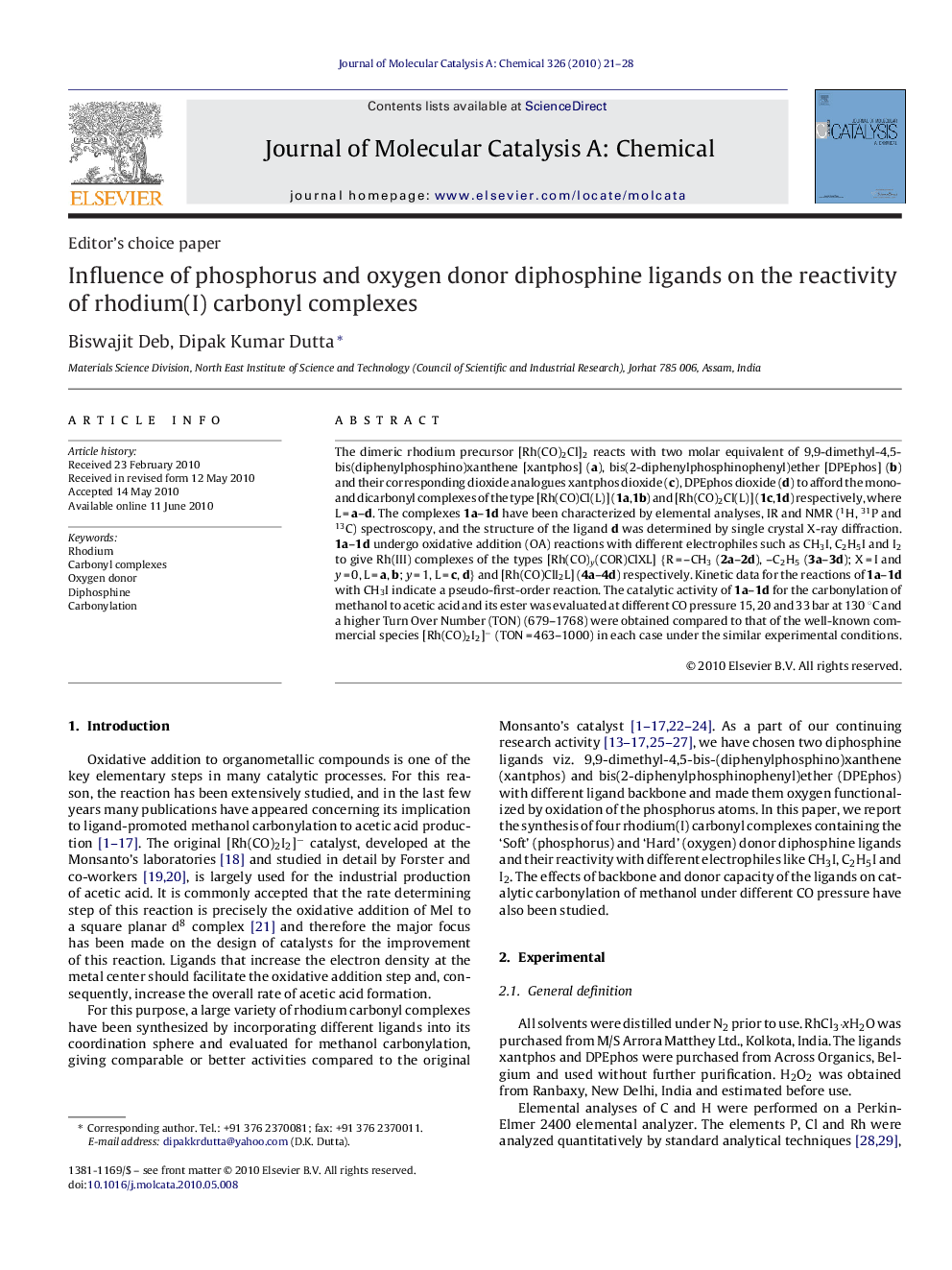| Article ID | Journal | Published Year | Pages | File Type |
|---|---|---|---|---|
| 66723 | Journal of Molecular Catalysis A: Chemical | 2010 | 8 Pages |
The dimeric rhodium precursor [Rh(CO)2Cl]2 reacts with two molar equivalent of 9,9-dimethyl-4,5-bis(diphenylphosphino)xanthene [xantphos] (a), bis(2-diphenylphosphinophenyl)ether [DPEphos] (b) and their corresponding dioxide analogues xantphos dioxide (c), DPEphos dioxide (d) to afford the mono- and dicarbonyl complexes of the type [Rh(CO)Cl(L)] (1a,1b) and [Rh(CO)2Cl(L)] (1c,1d) respectively, where L = a–d. The complexes 1a–1d have been characterized by elemental analyses, IR and NMR (1H, 31P and 13C) spectroscopy, and the structure of the ligand d was determined by single crystal X-ray diffraction. 1a–1d undergo oxidative addition (OA) reactions with different electrophiles such as CH3I, C2H5I and I2 to give Rh(III) complexes of the types [Rh(CO)y(COR)ClXL] {R = –CH3 (2a–2d), –C2H5 (3a–3d); X = I and y = 0, L = a, b; y = 1, L = c, d} and [Rh(CO)ClI2L] (4a–4d) respectively. Kinetic data for the reactions of 1a–1d with CH3I indicate a pseudo-first-order reaction. The catalytic activity of 1a–1d for the carbonylation of methanol to acetic acid and its ester was evaluated at different CO pressure 15, 20 and 33 bar at 130 °C and a higher Turn Over Number (TON) (679–1768) were obtained compared to that of the well-known commercial species [Rh(CO)2I2]− (TON = 463–1000) in each case under the similar experimental conditions.
Graphical abstractFour newly synthesized rhodium(I) carbonyl complexes of phosphorus and oxygen donor diphosphine ligands exhibit higher catalytic activity (TON 679–1768) than Monsanto's species (TON 463–1000) under similar experimental conditions.Figure optionsDownload full-size imageDownload high-quality image (60 K)Download as PowerPoint slide
